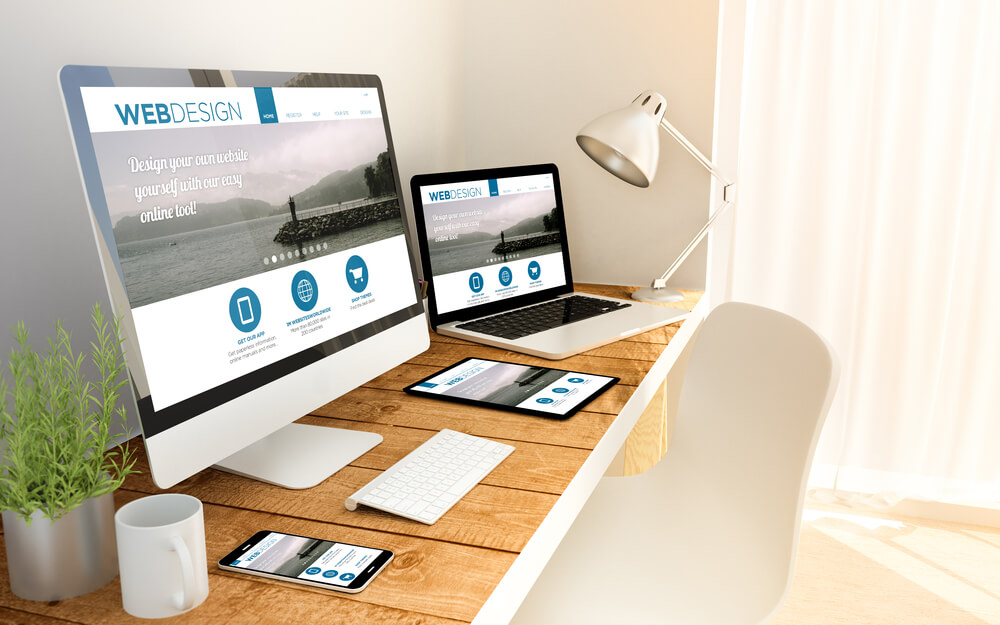
Have you ever left an online store because its website was difficult to use? Or given up on buying something because you couldn’t find the “Add to Cart” button? Ever spent an hour picking the perfect items, only to run into non-stop errors when you tried to pay? These experiences are frustrating because shoppers expect an easy-to-use web design and a smooth buying process. Design a responsive website is key to avoiding these issues.
A user-friendly website is important for e-commerce business holders. If it is hard to use, then the customer will leave, and he/she would head to a different place. However, a strong website design can actually show the value of your products to potential customers, boost sales, and bring back customers again and again. Here’s how to do that:
Make your website load fast to keep all your visitors happy. Use clear labels on your menus so everyone can easily find what they are looking for. Lastly, make sure that your website works well not only on computers but on phones as well, so you can reach even more customers.
How to Design a Website
These are the three main elements of any website: web hosting, a domain name, and the website platform. You can purchase them from different providers, or you can buy, for example, the website platform where there are several parts put together in one. For example, the one that Shopify provides with their website builder includes a web platform, web hosting, plus an option for you to buy a custom domain from them or connect one that you bought from another provider.
Web hosting is a type of service that gives you technology and space that is required for your website over the Internet. Actually, website files live on the hosting company server. Servers are the computers that manage resources on the internet, like storing, processing data, serving web traffic, and more.
Domain Name: It’s the actual address of your website. It works more or less like a street address. Just like a street address shows you where the business is physically, a domain name does this about your website on the Internet. Usually, it is a name followed by something that finishes with .com.
Website Platform: It’s the software that you use to build your website. For example, you could use a website builder or CMS, and both usually don’t require any coding skills. The website builder typically is much easier to use in comparison with a CMS platform. Website builders offer more services like handling CMS and hosting tasks, drag-and-drop design tools, and sometimes e-commerce features.
What You Need to Create an Online Store
Online shop owners can also benefit from adding more e-commerce features. These could be purchased from other providers or got free with an e-commerce website builder. In this regard, for instance, the website builder from Shopify comes with Shopify Payments and a free SSL certificate.
Below is a rundown of some of the most popular services these companies offer:
Payment gateways: This is simply an online service that is designed to authorize and encrypt payment data for credit and debit card payments in e-commerce stores. Payment gateways, like Shopify Payments, make it possible for businesses to accept payment for products or services sold online. It is a bridge between your customers, website, and the banks. This makes it a sure way to encrypt and transfer the payment information coming from customers for smooth and reliable processing of transactions.
Secure sockets layer (SSL) certificate: This is an online certificate that encrypts your site so that all information you transfer between your visitors, your site, and you are safe at all times. SSL certificates are vital for online stores because they manage sensitive customer data for payment and shipping. You can be able to obtain SSL by purchasing one from an authentic certificate authority or even getting one free from a non-profit certificate authority – Let’s Encrypt.
Reach a website designer to help get your responsive site in place. If you need help, now you can hire a website designer to help build your professional, secure online shop.

How to Design a Responsive Website: A Step-by-Step Guide
The process of creating a website is a step-by-step one. Do these steps one at a time, and in no time, you will have an excellent website.
Set Your Website’s Purpose and Goals
Your website’s purpose and goals will set how you make decisions on structure, content, and key features. For example, an online shop that is goal-oriented could be for selling products or services. To get to those goals, key features like easy navigation to the products or services section must be in place, with content areas that include a blog to get people interested.
For example, if you design a Shopify website, ensure it has all the features you need to reach your goals. Perhaps you need to commission from a UK-based web designer, design a responsive website, good-looking site that will be effective for the function it was designed for. Your goals will help you design your site well if they are defined.
Research Your Target Audience and Competitors
Conduct research on the people you want to target to have an idea about their surfing habits, buying cycles, interests, and decision drivers. You can do this research online or send questionnaires to potential customers. With that information, you should have a design that has an emotional attachment to your destination users.
Do your customers surf the internet with mobile devices? Then you should have a mobile-first design. Will customers take a lot of time researching before they buy? You should have a comparison page that shows in black and white why your product is to die for. You may also look around at what the winning companies are doing and then add to them the uniqueness of your own.
In designing, you may also want to use a professional such as the Frenco web design agency. They can help you build a site that will resonate with your audience and leave your competitors in the dust. With an understanding of your customers and what is working for the competition, you are in a better position to create that website that is effective and attractive.
Build Your Website Sitemap
A sitemap is just a blueprint of your website structure, basically a structured list of all pages on your website, from your home page, contact pages, and product/service pages, to About pages and career pages. The development of a sitemap enhances the findability and visibility of the site both to the visitor and the search engines. Sitemaps support search engines by assisting them in processing and indexing content and identifying the most important pages.
Sitemaps assist you spread out the workload of optimizing the overall user experience, but they are most valuable if you have a lot of pages. When you visualize your site structure and flow, sitemaps help you organize your site around the most important user pathways.
This means that, for instance, if you think of selling something, the site is structured in a way to make it easily understood where different pieces of information are located. For instance, a link to your online store in the main menu, with sub-pages for the product categories: Apparel, Footwear, and Accessories.
If you ever have a problem with design, Shopify can help. Shopify Experts are freelance web designers and agencies with proven experience in design, development, and marketing. They’ll help you design a responsive website that functions how you want it to and enhances user satisfaction.

Create a Visual Design
Consult the brand guidelines as you develop the visual concept for your website so that all the visual elements align with what the brand will permit. Think of design features, color, and typography with every other design detail in unison in order to help the stated goals of the website.
For example, a website that is supposed to convey a feeling of calmness and lightness will demand a minimal theme, plenty of space, and a lot of white. On the other hand, if the website is going to have lots of text passages to read through in order to explain technical products, you might choose a more conventional design, where it’s easy to read the text.
Most website builders offer a set of built-in themes: pre-built packages curating layouts, fonts, colors, backgrounds, or headers and footers for your site. Most of the time, these builders will allow you to customize these themes very widely.
In design a responsive website, find the best places to design websites with all the tools and flexibility you need to develop a website that looks good and works well on all devices.
Select a Website Platform
Choose a website builder or CMS platform that matches your web design skills, fits your budget, and offers the security, flexibility, and scalability you need.
If your website builder has themes or a drag-and-drop editor, make sure the customizations available support your vision. For example, if you need ecommerce features or custom forms, ensure the website builder you choose has the tools to easily add these functions.
If you plan to work with a professional web designer, discuss which website builder will best fit your vision. If you plan to manage the website yourself, make sure you can easily update the platform after the initial design is done.
Optimize for Effective SEO
SEO is the process by which the number of visitors to your site is increased by improving the position of your website with search engines. A good SEO approach should be a dual combination of technically sound and content-rich marketing.
Technical SEO includes improving page speed, optimizing metadata with headers, titles, and meta descriptions, creating alt tags for images, fixing broken links, and submitting a sitemap to search engines so they can properly index your website.
Content SEO involves building content around keywords, or terms, that your target audience would be using to find the answers to their questions. You might build product pages, service pages, and blog posts around key terms that someone might be searching for, like “affordable Cuisinart alternative” or “best walking sandals.”
SEO tools assist you in optimizing content, site structure, and site performance. They check your page speed, find broken links, and score you on your content use, the structure of your site, and your use of keywords. Crucial performance areas for a design a responsive website in search results include technical and content SEO.


